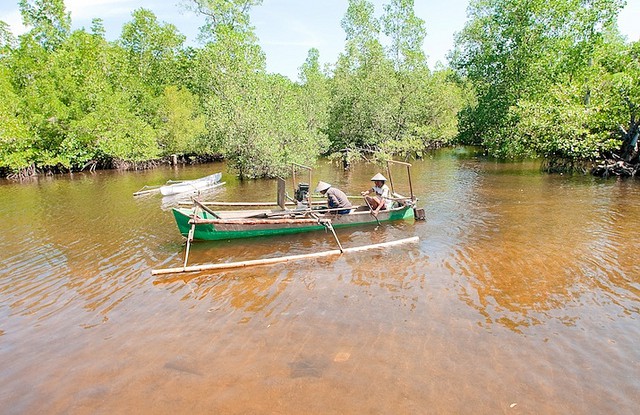The full impact of current plans to convert 2.24 million hectares (ha) of Indonesian mangrove forests to aquaculture shrimp ponds is unknown and could put sustainable land management strategies at risk, say the hosts of an upcoming conference to be held at the headquarters of the Center for International Forestry Research (CIFOR).
Although Indonesia’s Ministry of Forestry has put in place a sustainable strategy for mangrove protection and use, current Ministry of Fisheries plans include expanding aquaculture from a current 660,000 ha to more than 2.9 million ha, according to the Mangrove Action Project (MAP).
More than 100 delegates at a three-day conference, “Restoring Coastal Livelihoods,” hosted by MAP from February 17 to 20, will debate such topics as the impacts of mangrove conversion, the potential for mangrove restoration and sustainable livelihood alternatives in degraded areas. They then plan to develop adaptive models and scenarios and provide recommendations to Indonesia’s National Mangrove Strategy.
Tropical mangrove forests, which grow in estuaries and intertidal areas between land and sea, help protect coastal areas from erosion and inland areas from high waves. Their salt-filtering roots and leaves allow them to survive in saline wetlands.
Mangrove forests also sequester large amounts of carbon: “Total carbon storage in mangrove ecosystems is exceptionally high compared with most forest types,” wrote the authors of a 2009 CIFOR paper, “Carbon storage in mangrove and peatland ecosystems.” Clearing of mangrove forests, therefore, releases comparatively large amounts of carbon emissions, a key driver of climate change.
ENVIRONMENTAL RISKS
Since 1980, Indonesia has lost more than 26 percent of its mangroves, which have shrunk in area from 4.2 million ha to 3.1 million ha in large measure due to an increase in aquaculture ponds created as part of the “blue revolution” of the late 20th century.
The blue revolution was meant to provide jobs and increase access to protein for Indonesia’s coastal communities, but the focus on industrial shrimp production to increase foreign currency exchange, and substandard construction, maintenance and management of fish ponds has decreased the ecological health of coastal systems and the resulting livelihoods of coastal communities, MAP says.
Some 60 percent of mangrove loss has been attributed to conversion of mangroves to brackish water aquaculture ponds.
From 2000 to 2009 the annual rate of mangrove deforestation in Indonesia was 22,000 ha per year, according to MAP. Such a rate would cause annual carbon emissions of 23 million tons.
Research shows that deforestation generates around 10 percent of carbon emissions from deforestation globally, although it accounts for just 0.7 percent of the world’s tropical forest cover. Deforestation also leads to subsidence of near-shore systems, worsening the effects of sea-level rise.
For more information about this topic, please contact Daniel Murdiyarso at d.murdiyarso@cgiar.org
We want you to share Forests News content, which is licensed under Creative Commons Attribution-NonCommercial-ShareAlike 4.0 International (CC BY-NC-SA 4.0). This means you are free to redistribute our material for non-commercial purposes. All we ask is that you give Forests News appropriate credit and link to the original Forests News content, indicate if changes were made, and distribute your contributions under the same Creative Commons license. You must notify Forests News if you repost, reprint or reuse our materials by contacting forestsnews@cifor-icraf.org.

